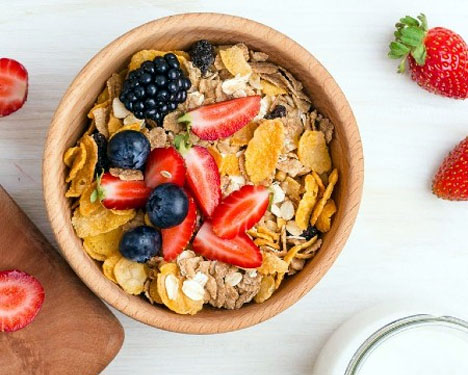
Carrie Dennett wrote . . . . . . . . .
Studies on weight and health typically focus on observed associations between BMI and increased risk of chronic disease. Setting aside for a moment that association isn’t causation, what if the focus on BMI is ignoring a factor that’s more likely to have an actual impact on health?
Research out of the Women’s Health Initiative (WHI) published last year in JAMA Network Open found that women with BMIs in the “normal” range (18.5 to 24.9), but waist measurements above 34 inches (88 cm)—what’s officially known as “normal-weight central obesity”—had a 31% increased risk of all-cause mortality compared with women with normal weight and no central obesity. They also had a similar risk as women with an “obese” BMI and a large waist. As for women who had “overweight” or “obese” BMIs but waists less than 34 inches? Their risk was similar to women with “normal” BMIs and smaller waists—in some cases even slightly lower.1
One of the study’s coauthors, Marian Neuhouser, PhD, RD, head of the Cancer Prevention Program at Fred Hutchinson Cancer Research Center in Seattle, says these results were unexpected. “It was really surprising that someone with a so-called ‘normal’ BMI but with a high waist circumference has an equal risk to someone with an obese BMI and a high waist circumference,” she says. “This suggests that those groups of people may have a similar metabolic profile.” The women who had larger waists, which suggests more visceral fat, also were more likely to smoke, get less physical activity, and have a lower socioeconomic status—all of which can contribute to poor health outcomes on their own. However, the association between a large waist and increased mortality risk remained even after controlling for those elements. Neuhouser says this suggests that visceral fat independently contributed to the increased health risks they observed.
An invited commentary from researchers at Indiana University School of Public Health says that considering both waist circumference and BMI in relation to health and longevity is an improvement, because it “goes beyond simply treating all mass in the body as a homogenous pool.” However, the authors say waist circumference is “a black-box predictor of an outcome,” rather than an explanation based on a mechanism in the body or another physiological factor.2 One of the authors’ colleagues, Carmen Tekwe, PhD, an associate professor of biostatistics at Indiana University, says the WHI research builds on previous research demonstrating that central obesity is a better predictor of disease risks than BMI—specifically among postmenopausal women. “While their analyses demonstrate a strong association between central obesity with disease outcomes, this strong association does not imply causation,” she cautions, adding that additional studies are needed to demonstrate causality.
All Body Fat Isn’t Created Equal
So what’s known about the visceral fat-disease connection? It’s clear that individuals with a BMI in the “normal” range but with a high body fat percentage have a significantly increased risk of developing metabolic syndrome, and “obesity” as defined by BMI may not accurately identify who’s at risk of “obesity-related” CVD.3 Body fat distribution—which most studies don’t consider—may explain inconsistent results among studies looking at associations between BMI and CVD.4 There are several types of abdominal fat, including superficial subcutaneous abdominal fat and the deeper visceral fat that surrounds internal organs (the viscera). It’s visceral fat that’s thought to increase the risk of CVD and type 2 diabetes.4,5 On average, visceral fat makes up 10% to 20% of total fat in men and 5% to 8% in women, and increases with age in both genders.5,6
Visceral, or central, obesity is part of an overall phenotype that includes dysfunctional storage of fat tissue and accumulation of excess fat in organs, including the liver, skeletal muscle, heart, and pancreas.4 Research in 2017 from the UK Biobank Imaging Study found that higher levels of visceral fat and muscle fat infiltration were associated with coronary heart disease and type 2 diabetes, while lower levels were associated with metabolic health.7 Data from the Multi-Ethnic Study of Atherosclerosis trial found that changes in only visceral fat over time were associated with new cases of metabolic syndrome. This was true regardless of BMI.8 Visceral fat is independently associated with poor glucose tolerance, elevated triglycerides, elevated small LDL cholesterol, and low levels of HDL cholesterol.4
“I’ve definitely had people who show these metabolic effects who aren’t overweight. ‘Why is your blood sugar high, why is your cholesterol high [if you’re thin]?’” says Lauren Harris-Pincus, MS, RDN, author of The Protein-Packed Breakfast Club. “It’s often those people who say they can eat whatever they want and not gain an ounce. They look at healthful eating as something that’s only related to weight.”
The authors of the WHI study noted that the health risks associated with central obesity may occur partly because these women are more likely to have less muscle and fat in the hips and thighs. The biggest age-related changes in body composition are a loss of muscle mass and an increase in body fat, even when BMI changes little. Those two factors may contribute to each other, as an increase in visceral fat leads to inflammation, which contributes to muscle loss, while muscle loss contributes to reduced physical activity, which can lead to fat gain, especially visceral fat. Sarcopenia—the age-related loss of muscle mass and decline in muscle strength—is itself associated with a significantly increased risk of disease and early death.9
The Role of Stress
Chronic stress affects the hypothalamic-pituitary-adrenal (HPA) axis. Over time, chronic activation of the HPA—including release of the stress hormone cortisol—promotes the loss of subcutaneous fat and accumulation of visceral fat, and harms blood vessels in the heart and brain. However, not all people exposed to chronic stress experience these adverse effects. Some people adapt to familiar stressors and have means of coping with new stressors without releasing excess cortisol. Other people are hypervigilant and are highly reactive to stressors, including familiar and nonthreatening stressors, continuing to secrete excess cortisol. A 2000 study found that lean people with visceral fat accumulation were hypervigilant.10
Both types of people may gain weight when exposed to stress, but people with low stress reactivity gain more subcutaneous fat, while those with high stress reactivity lose subcutaneous fat and gain visceral fat. Why? The brain’s energy needs are higher when we experience stress, and it demands that energy from the body. A low-reactive stress response drives people to eat to feed the brain—in other words, “comfort eating”—while a high-reactive stress response mobilizes free fatty acids from subcutaneous fat and builds up easily accessible energy stores in visceral fat cells. High stress reactivity is associated with high risk of cardiovascular mortality, while low stress reactivity isn’t.10
“We are the most anxious society in history,” Harris-Pincus says. “We’re not sleeping enough, we spend too much time staring at screens. What is that doing to us?”
Genetic Influences
Genes associated with overall body fat function primarily in the central nervous system, while genes associated with abdominal obesity function in fat tissue. The presence of these genes, and whether they’re expressed, may account for 51% of the variance in visceral fat accumulation. Genomewide scans have identified several genes of potential interest, as well as genetic variants that are associated with increased risk of developing the metabolic complications associated with central obesity.4,11
A 2015 study using data from the Nurses’ Health Study and the Health Professionals Follow-up Study found that a central obesity genetic score—based on 14 well-established genetic variants that increase susceptibility to a high waist-to-hip ratio—was strongly associated with risk of developing type 2 diabetes, independent of BMI and diet and lifestyle factors.12 More recent studies have found an association between genetic predisposition to a higher waist-to-hip ratio and increased risk of both type 2 diabetes and coronary heart disease,13,14 with a 2018 JAMA study finding evidence of a possible independent role of the relative inability to deposit excess fat around the hips and thighs.14 Similarly, a 2016 study found that for any BMI, one-half of individuals who carried a favorable adiposity genetic score—composed of genetic variants associated with higher BMI and body fat percentage but also with lower triglyceride and LDL cholesterol levels, and higher insulin sensitivity and HDL cholesterol—were at lower risk of type 2 diabetes and CVD, suggesting that the ability to store excess fat subcutaneously confers some disease protection.15 A 2019 study that looked at both genomewide and abdominal MRI data came to similar conclusions.16
Assessment in the Clinical Setting
Waist-to-hip ratio was a popular method of estimating visceral fat, but it has proved unable to reliably predict the absolute amount of visceral fat. The authors of a 2013 study suggested that the combination of a larger waistline and elevated triglycerides, while not replacing direct measurement of visceral fat, is effective as a low-cost screening tool.4 Unfortunately, while the National Institutes of Health, the World Health Organization, the American Heart Association, and the International Diabetes Foundation all recommend using waist circumference as a measure of central obesity and screening tool for risk of metabolic disease and CVD, generally they do so only if someone’s BMI is above 30. In addition, there’s no universal agreement about where to measure the waist, and risk cutoff points may vary by sex and ethnicity.17
In the research setting, direct measurement with CT and MRI scans (CT is considered the gold standard) clearly can distinguish between visceral fat and subcutaneous abdominal fat, although dual-energy X-ray absorpitometry (DXA) scans may be somewhat more accessible.4,17 A 2013 study found that both DXA and waist circumference are reliable alternatives to CT,18 and a 2019 study found that DXA had a satisfactory level of precision in individuals with a BMI above 18.5, especially those with high levels of visceral fat.19
“If everyone had access to a DXA scan, we could see what’s going on, but that’s not financially or logistically feasible,” Harris-Pincus says. “If somebody is obviously lean and has a normal BMI, but has the metabolic factors we don’t like to see, we can maybe assume that they have more visceral fat, but how is that going to change our intervention?”
As part of trying to create a clinical profile when a DXA scan isn’t in the cards, Harris-Pincus says she still sees value in weighing patients, unless that information will be specifically distressing to them, such as with individuals who have a history of disordered eating. “The scale doesn’t tell you everything, but at least it’s a noninvasive, readily accessible indicator,” she says. “Knowledge is power, unless it’s destructive.”
Neuhouser says there’s a growing awareness in the research community that, while it’s important to look at BMI, BMI alone isn’t sufficient for assessing health risks; but this awareness isn’t necessarily trickling down to the health care setting. “I would suggest that BMI is a tool, but it’s not a perfect tool,” she says. “It’s just one point of information. Just because someone has a normal BMI doesn’t mean they’re metabolically healthy.” She emphasizes the importance of looking at the whole patient, including taking waist measurements and doing blood work, adding that, even if patients with a normal BMI don’t smoke and say they exercise and eat healthfully, it doesn’t mean they’re not at risk—not all of the women in the study with normal-weight central obesity had unhealthful lifestyle habits.
While measuring waist circumference may help identify potentially unhealthy body composition in some patients, this tool can’t capture all cases of excess visceral fat. For example, a few years ago, Harris-Pincus had a DXA scan to assess her bone density. To her surprise, the scan revealed that she has an unusually high amount of visceral fat, despite having a BMI below the middle of the “normal” range, and a waist circumference that’s proportional to her frame. But the surprise went beyond the fact that her body fat percentage isn’t outwardly visible—it was that someone who has engaged in regular exercise for decades and eats a fiber-, protein-, and vegetable-rich diet could have a body composition that may increase her cardiometabolic risk. She’s working on individualized strategies with her doctor—noting that her situation may be unique—and maintaining her preexisting nutrition and physical activity habits, which have their own benefits for health independent of body composition. “All I can do is continue to eat the way that I feel is best for my health and my future,” she says.
Interventions
Awareness of the potential risks of excess visceral fat and identifying patients that have this phenotype are the first steps—but what is the appropriate intervention? Just because a certain body shape is associated with higher disease risk, this doesn’t necessarily mean that particular shape can be changed, or that changing it will change disease risk.2 However, here’s what’s currently known about the following interventions.
Weight Loss
A 2017 review and meta-analysis of 89 studies published in the International Journal of Obesity found that no weight loss strategy—diet and exercise, weight loss drugs, or bariatric surgery—preferentially reduces visceral fat.20 Research generally shows that small amounts of weight loss lead to a greater reduction in visceral fat than in total fat, but that pattern doesn’t continue with further weight loss. Moreover, while short-term, very low-calorie diets produce significant reductions in visceral fat, these effects go away after 12 to 14 weeks.21
Nutrition
Most studies on the role of nutrition in visceral fat accumulation are animal studies. However, several studies—including epidemiologic, cross-sectional and randomized controlled trials—have found that adherence to a Mediterranean diet may be beneficial,22-26 especially when paired with physical activity.24,26 A 2019 longitudinal study of 1,677 participants in the Framingham Heart Study found that increased adherence to a Mediterranean diet over time was associated with a corresponding decrease in fat deposits in the visceral and pericardial regions, and that, by the time someone reaches adulthood, diet matters more than genetic predisposition.27
Physical Activity
Regular physical activity has been shown to substantially reduce visceral fat, even when body weight remains the same—likely due to an increase in lean tissue.4,28 A 2016 systematic review and meta-analysis found that exercise was superior to a reduced-calorie diet in specifically decreasing visceral fat, and the authors concluded that because reduction in BMI doesn’t necessarily reflect changes in visceral fat, it’s a poor marker for assessing the health benefits of lifestyle interventions.28 A 2019 systematic review and meta-analysis of 17 randomized controlled trials found that physical activity reduced visceral fat more than pharmacological interventions. The authors also stated that weight loss alone isn’t a good measure of health benefits.29
Bottom Line
Just as it’s becoming clear that BMI isn’t the be-all-end-all when considering whether and how body fat may affect health, it’s not yet clear how to design a meaningful intervention when someone has excess visceral fat. While a Mediterranean diet and regular physical activity may yield positive change, the contribution of genetics is still a factor. In addition, the role of stress may warrant a referral to a therapist when a dietitian assesses that a patient may have heightened responses to even small, everyday stressors or has a history of trauma.
Source: Today’s Dietitian
Filed under: Health, News and Articles | Tagged: BMI, Waist Circumference | Comments Off on BMI vs Waist Circumference – Is One Better than the Other as a Measure of Health?













